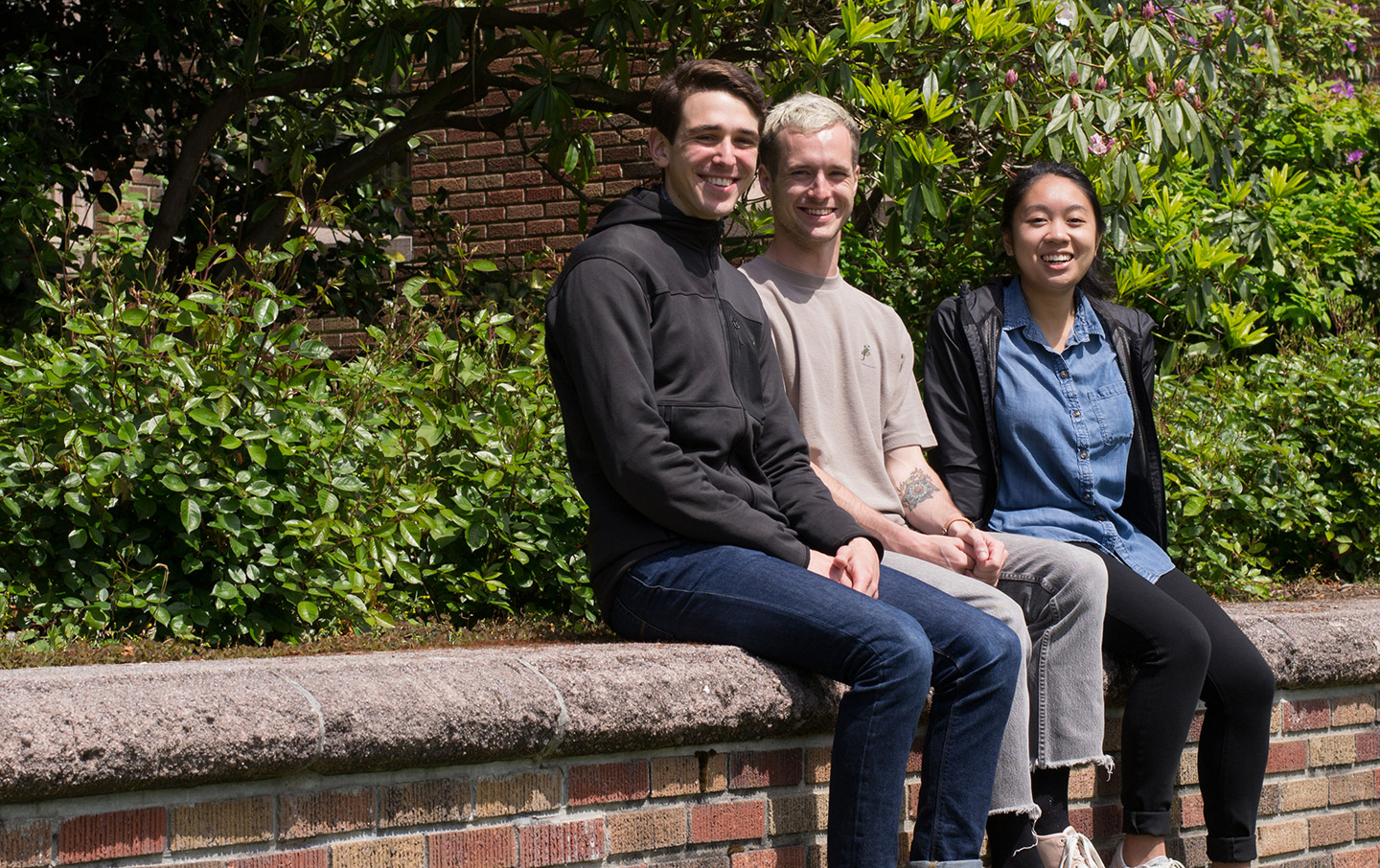A music collection is full of emotion. At KEXP, a public-radio station based in Seattle, that’s particularly true. For years, the station’s staff have been carefully curating the best music; the KEXP library is full of the history and context of that music. It’s a place where it’s easy to find an emotional connection.
A group of three Informatics students is working on a project to preserve that emotional power of the KEXP library, while adding the benefit of working in a digital space.
For their Capstone project, Adam Bourn, Monica Cao and John Harrison are creating a prototype called KEXP Shelves; which will work with KEXP’s existing content management system to bring the joy of browsing a physical library to a digital space.
KEXP’s approach to music is personal — it’s not about algorithms. Each DJ has their own way of exploring music while planning their shows. Historically, DJs would use the physical library while prepping for shows. But with a transition to the digital world, some of that has been lost.
Harrison, who grew up in Woodinville, first got the idea for the project while volunteering to help KEXP digitize its music collection. He has listened to KEXP for his whole life and knows it’s a powerful part of the community.
“I knew the KEXP library was something special as an important archive, but also as a historical representation of the music scene in Seattle,” he said. “It’s a unique collection of local artists. There’s a lot of stuff that is not archived other places. It’s also a really cool collection of music and the data surrounding that music. … For Shelves, we’ve really thought about how the station uses the library and how we can build a tool to make that library more useful to them.”
With Shelves, Bourn, Harrison and Cao (pictured left to right above) are creating a program that will provide information — including artist information, song titles, album images, label information, country of release and more — about the music in KEXP’s collection. It will also give DJs a way to comment on and discuss albums. DJs used to do that with notes stuck on physical albums, and it was a treasure trove of their thoughts and discussions. Shelves helps re-create some of that interactive element of the physical library.
“The music industry is becoming disconnected from the emotional context a music collection can have,” Bourn said. “People are feeling disengaged because their music collection is fueled off of an algorithmic process. This is really about keeping DJs and humans at the heart of music discovery rather than a robotic process. … We’re using technology to enable the core mission that KEXP has set out for itself.”
The three students began by exploring the library and speaking to DJs to get a good understanding of how they work. They also investigated where the DJs were having challenges with their current system, and looked for ways to help solve those problems.
To create Shelves, the team needed to get data into a database, set up a web server and build a website. They used KEXP data and metadata from MusicBrainz, an open-source music encyclopedia. On the Shelves website, DJs and other staff will be able to explore data from KEXP and MusicBrainz side-by-side.
Bourn, Cao and Harrison brought together the skills they’d learned throughout their time in the iSchool, and each focused on their own specialty. Cao was the lead designer for the project, while Bourn did more of the back-end development work and Harrison focused on the front-end user interface.
The work really met the goal of a Capstone project, which is to give students a chance to apply their skills to a real-world problem.
“I think a big highlight of this project has been being able to exercise everything we’ve learned in our classes,” Cao said. “We are doing our own work and being able to see that we can do this as a team.”
Dylan Flesch, media asset librarian for KEXP and a 2014 graduate of the iSchool’s Master of Library and Information Science program, is excited by the ways in which KEXP Shelves could help DJs collaborate and share their opinions on new music while offering some of the joy and serendipity of browsing a physical library.
“KEXP isn’t in a race for building the largest collection,” he said. “I think what’s interesting about working with the KEXP music library collection isn’t the size of it. It’s the amount effort that’s gone into building it. … It’s a lot of time and energy spent by these music aficionados finding the best music releases out there and bringing them to our listeners.”
He hopes that KEXP Shelves can help DJs find new ways to explore that music, so they can deliver it to their listeners. He’s appreciated the skill the students have brought to the project.
“It’s been very rewarding to work with all three of them and watch the project grow from the earliest musings to what it is now,” he said.
